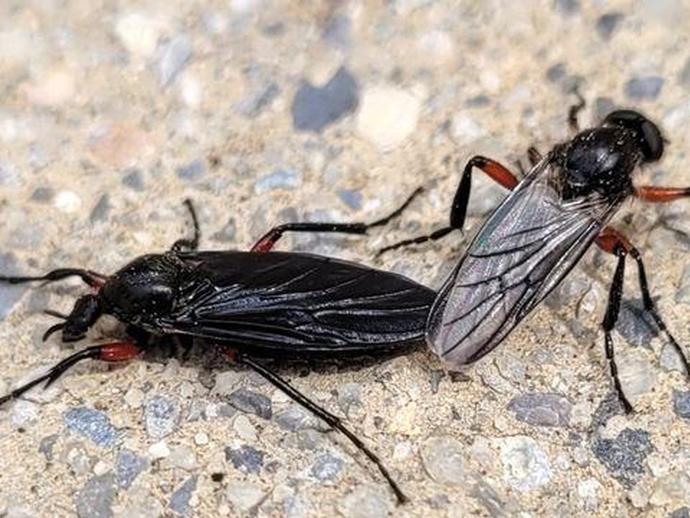April 13, 2022
Here's a photo from VMNH Associate Curator of Recent Invertebrates: a mating pair of March flies!
There are 32 species of March flies (family Bibionidae) that can be found in North America, and the vast majority of them appear in the spring, albeit briefly; the adults have very short life spans and the females die after laying eggs. While the adults of some species of March fly don't feed at all, those that do feed exclusively on nectar and pollen. They're important pollinators, especially for fruit orchards.
While the March flies we have in Virginia aren't likely to cause any trouble, there's one species in the southeastern U.S. that doesn't have many fans: Plecia nearctica, better known as the "lovebug." Lovebugs have long been considered a nuisance in states where they occur because they emerge in large numbers and have a tendency to smush themselves on passing cars as they lazily fly across roads. This was especially bad before modern advances in automotive paint; the crushed bodies of lovebugs turn slightly acidic if left plastered across your car hood or bumper, leading to pitting on the paint or chrome!

 Hours & Admissions
Hours & Admissions Directions
Directions

